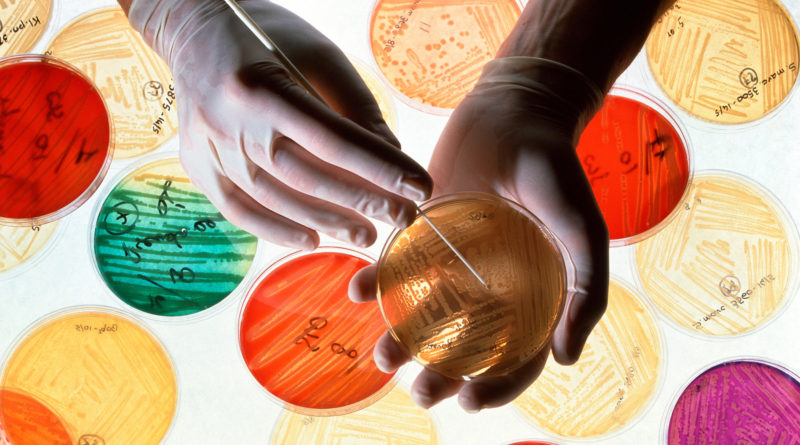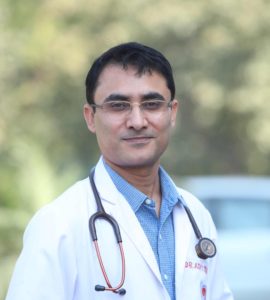CANCER: Know your Chances
By: Dr Ajay Sharma
It is never easy to have an accurate prognosis of cancer but the advent of molecular diagnostics in the oncology arena offers some hope
If you have cancer, you must have questions about how serious your cancer is and your chances of survival. The estimate of how the disease will go for you is called prognosis. Many people want to know their prognosis. They find it easier to cope when they know more about their cancer.
Some of the factors that affect prognosis include the type of cancer and where it is in your body, the stage of the cancer, which refers to the size of the cancer and if it has spread to other parts of your body, the cancer’s grade, which refers to how abnormal the cancer cells look under a microscope. Grade provides clues about how quickly the cancer is likely to grow and spread: certain traits of the cancer cells, your age and how healthy you were before cancer and how you respond to treatment.
Of course, you will seek opinion from your doctor about survival statistics. Or, you may find statistics confusing and frightening, and think they are too impersonal to be of value to you. It is up to you to decide how much information you want.
If you do decide you want to know more, the oncologist who knows the most about your situation is in the best position to discuss your prognosis and explain what the statistics may mean.
Survival statistics most often come from studies that compare treatments with each other, rather than treatment with no treatment. So, it may not be easy for your doctor to give you an accurate prognosis. Cure means that there are no traces of your cancer after treatment and the cancer will never come back. Remission means that the signs and symptoms of your cancer are reduced. Remission can be partial or complete. In a complete remission, all signs and symptoms of cancer have disappeared.
If you remain in complete remission for five years or more, some doctors may say that you are cured. Still, some cancer cells can remain in your body for many years after treatment. These cells may cause the cancer to come back one day. For cancers that return, most do so within the first five years after treatment. But, there is a chance that cancer will come back later. For this reason, doctors cannot say for sure that you are cured. The most they can say is that there are no signs of cancer at this time.
As with most new technologies and treatments, molecular diagnostics are entering the oncology arena in phases. However, these phases are not fully evidence-based or scientifically driven – they are somewhat organic as physician and patient interest always seems to be a step or two ahead of the data. The concept of `precision medicine’, defined as therapy that is personalized to unique disease and host characteristics, has taken huge leaps in the cancer field with the advent of next-generation sequencing (NGS). It encompasses several technologies that generate gene sequence as well as copy number alterations and translocation of numerous genes.
The advantages of NGS are primarily the brute force of sequencing just about all expressed genes depending on the details of the platform, as well as the great `depth’, that is the number of `reads’ that allows for the detection of mutations that may be seen in only a fraction of cells.
A disadvantage is the level of noise mutations that may not be `drivers’ or may not be `actionable’, in that they do not clearly lend themselves to specific effective therapies. Several approaches have been devised to distinguish random mutations from true drivers, including direct testing of the genetic lesions in preclinical models or bioinformatics approaches that model the effects from the mutation sites and downstream biological pathways.

We can also assume that more frequent mutations are those selected above the much rarer random ones due to their evolutionary selection as drivers of growth (or drug resistance in the case of those that may arise after treatment). Even mutations that can be biologically confirmed as mediators of malignancy and metastasis phenotypes and for which active drugs exist may not be clinically useful.
NGS can generate results quickly since millions of pieces of small pieces of DNA are read in parallel. But tiling, or aligning the reads to generate interpretable results, requires complex bioinformatics support and a significantly longer time. For many tumour types, NGS has no proven benefit, although the theoretical advantage is that it may identify a clinical trial or even drug approved for a different cancer type that might be helpful. Accordingly, for today’s clinical practice, single gene assays suffice. However, as NGS become cheaper, it may be a simpler way to perform diagnostics on the small number of tumours in which several mutations, translocations or deletions are of proven benefit in decision-making, such as lung cancer or hematological malignancies. It also requires less tissue than multiple single gene tests.
NGS can also be applied to germline testing to detect heritable cancer susceptibility gene mutations and variants. It can also be helpful in the interpretation of tumour NGS results by excluding inherited variants that may be mono-allelic in the tumour. For familial genetic testing, NGS or multi-gene panel testing is being increasingly used as sequencing costs drop and can be informative in the setting of strong family histories without mutations seen in more common predisposition genes.
Importantly, a growing body of information regarding mutational analysis in large populations in the context of clinical outcome and response to therapies will assemble a more robust understanding of cancer genomics and systems biology that can elucidate critical vulnerabilities that can be tackled with specific targeted drugs, or more likely, combinations of drugs
The availability of portals for patients and physicians to understand better the nature and consequences of genomic alterations, available therapies and open clinical trials will greatly aid in clinical decisions and trial referral. Finally, large trials with numerous available targeted drugs are planned, including the NCI Match demonstration trial across all solid tumours and the master protocol as a regulatory approval pathway for second-line squamous cell lung cancer treatment. Altogether, this spells for a bright future for this still nascent field that will lead to comprehensive and precision molecular cancer therapeutics.
(The author is Senior Onco Consultant, Action Cancer Hospital, New Delhi)


